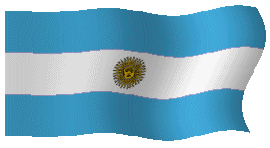
B"H
Jewish  Tours
Tours
 Buenos Aires, Argentina
Buenos Aires, Argentina
ARGENTINA, South American Federal Republic, general population (2004) 39,150,000; Jewish population 190,000.
The 15 years between 1919 and 1934 constitute the second stage in the history of colonization, during which the land area, the number of settlers, and the size of the non-agricultural population reached their peak. During this period, however, the deterioration of the settlement project began, with an increasing number leaving the land. Statistics do not show evidence of a drop in population, as new settlers came to replace those who left and the number of non-Jews in the colonies grew.
In 1925, following the critical years of 1911–16 and the subsequent increase in the number of cooperatives, delegates assembled and founded the Cooperativa de Cooperativas, later called Fraternidad Agraria (registered in 1931). Twenty-two cooperatives, including eight engaged in cattle breeding, were attached to the Fraternidad Agraria at the end of the 1960s, and though the Jewish agricultural population decreased and was replaced by non-Jewish colonists, the cooperatives were administered by Jews. All the cooperatives did their purchasing, modernized production methods, and marketed their products through the Fraternidad Agraria. The Jewish colonists had an important role in the Argentinean agricultural development. For example, the cultivation of sunflowers was introduced to Argentina by the Jews of the Mauricio colony. The first grain elevator of Entre Ríos province was built in 1931 by the Cooperativa Fondo Comunal in Domínguez. The cooperatives Granjeros Unidos (in Rivera), El Progreso (in Bernasconi), and La Mutua Agrícola (in Moisesville) were provided at the end of the 1960s with silos equipped with the most modern facilities to assure the greatest efficiency in handling, sorting, and storing grain. In Dominguez a vegetable oils factory named after Ingeniero Miguel Sajaroff was operated by Fondo Comunal together with the Federación Entrerriana de Cooperativas. It converts linen grains collected by the zone cooperatives into oil and by-products.
Eminent among the leaders of the agrarian cooperative
movement in Argentina, together with Miguel Sajaroff, unquestionably the
precursor and the mentor, are Adolfo Leibovich, Isaac Kaplan, Marcos Wortman,
Miguel Kipen, Elias
|
Visite nuestro sitio/Visit our home page: |